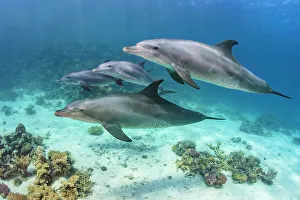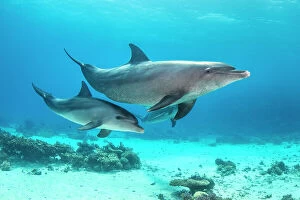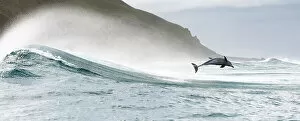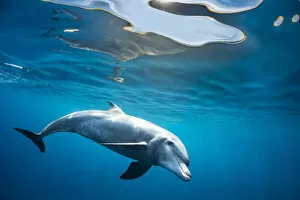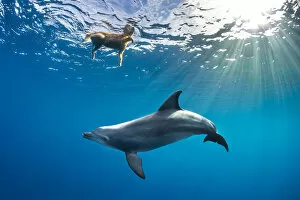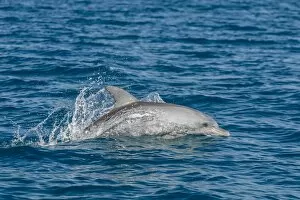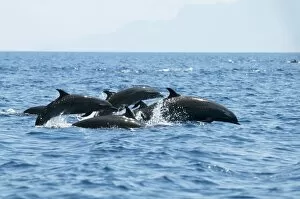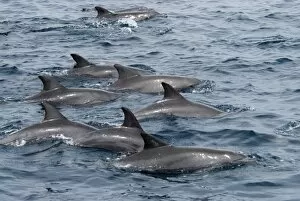Tursiops Aduncus Collection
The Indo-Pacific bottlenose dolphin, scientifically known as Tursiops aduncus, is a fascinating marine mammal found in the Indian Ocean
For sale as Licensed Images
Choose your image, Select your licence and Download the media
The Indo-Pacific bottlenose dolphin, scientifically known as Tursiops aduncus, is a fascinating marine mammal found in the Indian Ocean. This intelligent and social species forms tight-knit pods that navigate the vast ocean waters. In one captivating image, a pod of Indian Ocean bottlenose dolphins gracefully swim over a vibrant coral reef. Their sleek bodies glide effortlessly through the water, showcasing their incredible agility and grace. Another striking photograph captures an Indo-Pacific bottlenose dolphin with its penis extended off the Ogasawara/Bonin Islands in Japan. This behavior is not only unique but also serves as a reminder of the diverse reproductive strategies observed in marine mammals. Moving to South Africa's shores, we witness an awe-inspiring moment as an Indo-Pacific bottlenose dolphin leaps out of the surf against a backdrop of crashing waves. The sheer power and energy displayed by these creatures are truly mesmerizing. Further east in Egypt's Red Sea lies Gubal Island, where sunlight illuminates an Indian Ocean bottlenose dolphin swimming just below the surface. Its streamlined body cuts through the water effortlessly while basking in warm rays—a testament to nature's beauty. These wild dolphins continue to captivate us with their playful antics and acrobatics. Whether it be leaping out of waves or socializing within their pod, they remind us of how essential it is to protect our oceans' biodiversity. Nightfall brings another enchanting scene: Indo-Pacific bottlenose dolphins socializing and feeding at night in Yampi Bay, Kimberley—Western Australia's pristine coastal region bathed by Pacific waters. These nocturnal activities highlight their adaptability and resourcefulness when hunting for food under cover of darkness. Indeed, these magnificent creatures play vital roles within their ecosystems—an integral part of our planet's rich tapestry. As we marvel at images capturing moments from different corners of Earth—their natural habitats—we are reminded of the importance of conservation efforts to ensure their continued existence.

